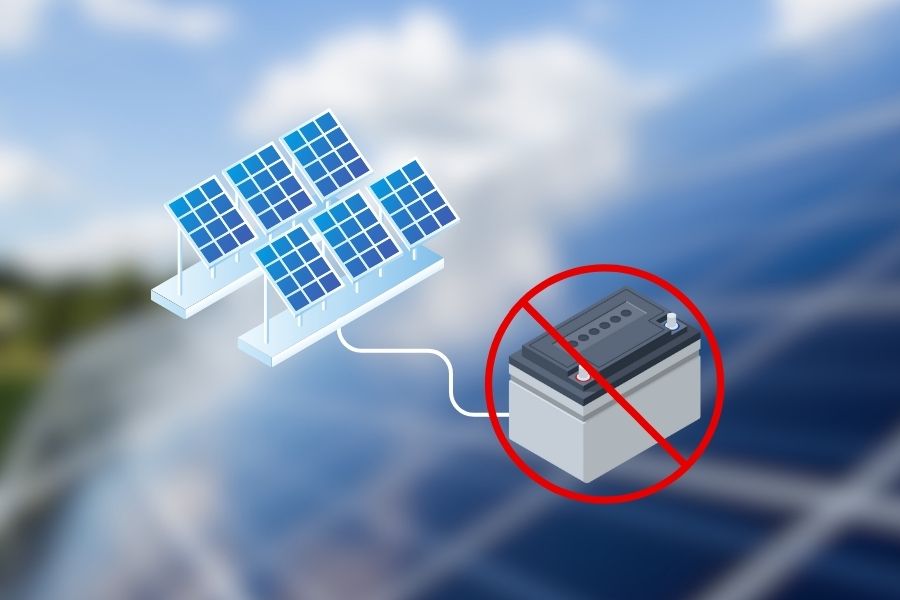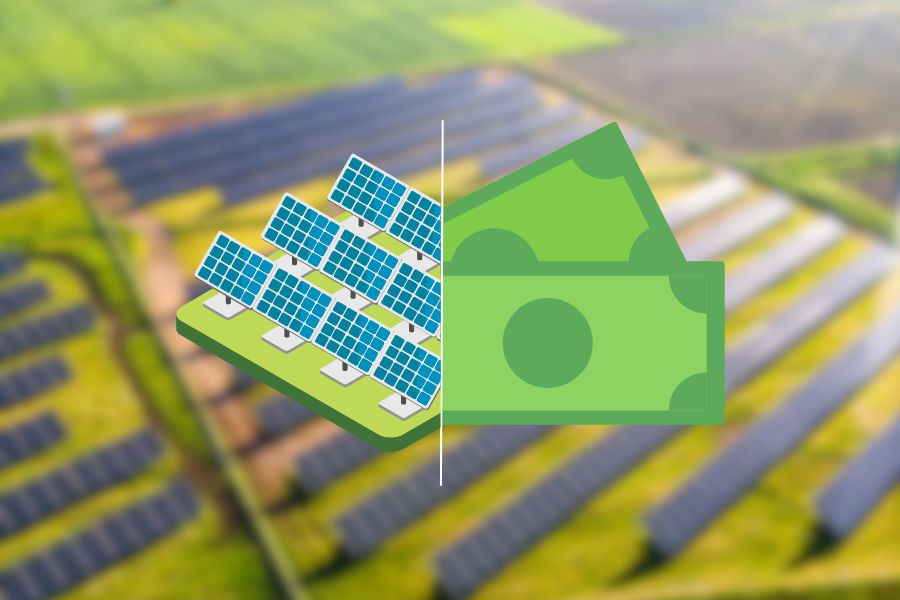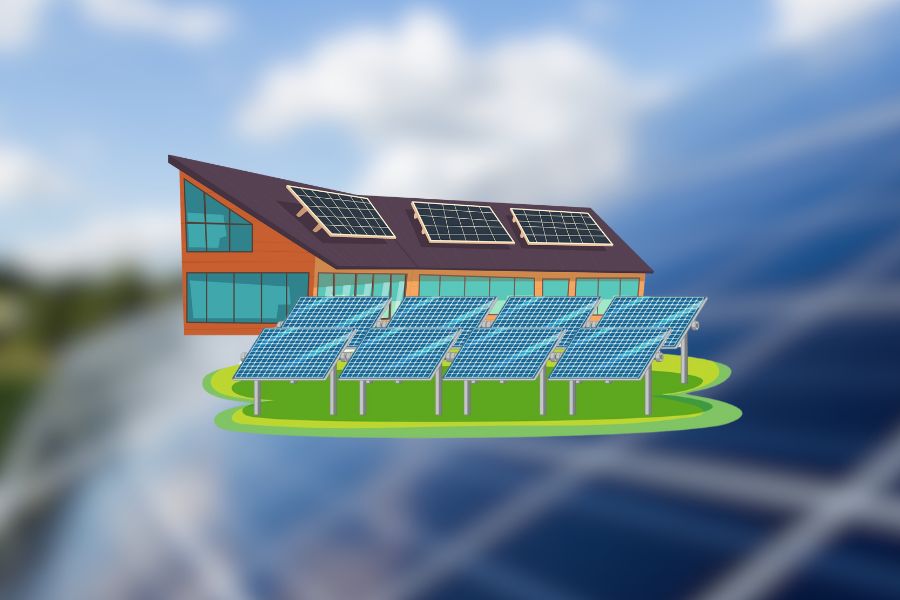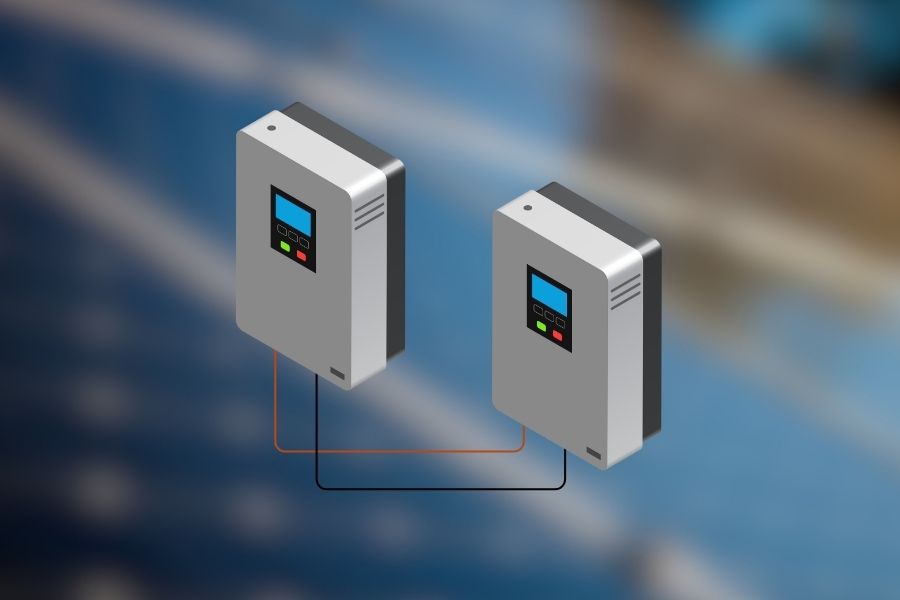Solar panels can operate without batteries, directly powering appliances or feeding into the grid when the sun shines.
Opting for this method can cut initial costs and system complexities. However, there’s a caveat: electricity is only available when it’s sunny. This means during cloudy days or nighttime, you’ll rely on the grid or alternative energy sources.
You embrace a real-time energy use approach by directly tapping into the solar power output. Though this can be effective, it demands consistent sunlight and strategic energy consumption planning.
Why Skip the Battery?
Batteries, while wonderful for storing energy, come with a few caveats. First, they significantly bump up the cost of your solar electricity installation. We’re talking about a good chunk of your budget!
Second, the simplicity of a direct-use system is appealing. With fewer components, there’s less to maintain and fewer potential failure points.
Third, from our green perspective, it’s worth noting that battery production and disposal have environmental implications. The materials used, and the energy consumed in their manufacturing, not to mention their limited lifespan, contribute to their footprint.
Lastly, batteries aren’t 100% efficient. Some energy is inevitably lost during the storage and retrieval process. So, while batteries are incredibly useful for consistent power, going without them can be economical, simpler, and more environmentally considerate.
Can I Use Solar Panels Without Battery Storage?
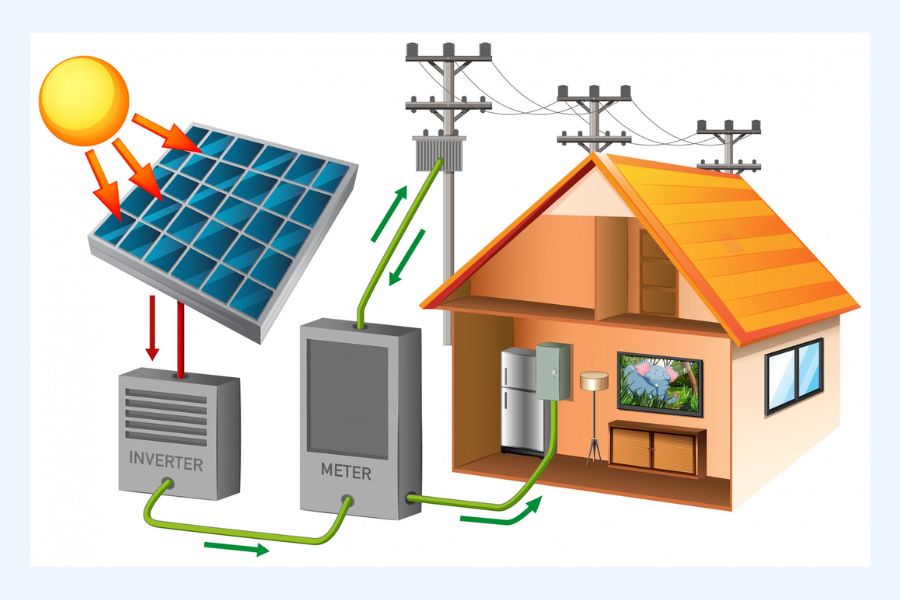
Yes, you can use solar panels without battery storage in Ireland. Here’s a breakdown of how and why:
- Grid-Tied Systems: One of the most common setups in many countries, including Ireland, is a grid-tied solar system. This system allows homeowners to feed excess electricity back into the national grid when they produce more than they consume. At times when the panels don’t produce enough electricity (like on particularly cloudy days), you can draw power from the grid. This system effectively uses the national grid as a “virtual battery.”
- Direct Use: If you’re generating solar power during the day, you can use that electricity in real time to power your appliances. This is especially beneficial for appliances with daytime-heavy usage, like washing machines or certain businesses operating during daylight hours.
- Limitations: Ireland, given its latitude, has limited sunlight hours during the winter, which means relying on direct solar power without solar battery storage can be challenging during those times. This makes a grid-tied system attractive, as you can still use grid electricity when solar production is low.
- Government Schemes: It’s worth noting that Ireland has introduced schemes such as the National Home Retrofit Scheme to promote renewable energy. Homeowners could receive payments for excess electricity fed back into the grid. It’s advisable to check the current regulations, incentives, and tariff rates if considering such an installation.
- Environmental Impact: While batteries benefit from storing energy during non-sunny hours, they also come with environmental concerns regarding production, disposal, and their overall lifecycle.
Do I Need a Battery for My Solar System?
Whether you need a battery for your solar system depends on several factors and your energy goals. Here’s a brief rundown to help you decide:
1. Your Energy Goals
- Continuous Power: A battery is essential if you need power, even during nighttime or cloudy days.
- Reduce Electricity Bills: If your main goal is to cut utility costs and you’re okay with drawing power from the grid when solar isn’t available, you might opt for a grid-tied system without a battery.
2. System Type
- Grid-Tied Systems: These are connected directly to the utility grid. Excess energy can be fed back to the grid (in areas with net metering), and electricity can be drawn from the grid when needed. No battery is required.
- Off-Grid Systems: For locations without access to the utility grid, batteries are a necessity to store excess energy for use when the solar energy system isn’t producing.
- Hybrid Systems: These are grid-tied systems with a battery backup. They combine the benefits of both, ensuring continuous power while also allowing feed-in to the grid.
3. Cost Considerations
Batteries can be a significant portion of the solar system’s cost. While prices have been dropping, they’re still a substantial investment.
However, they can offer savings in the long run, especially if electricity prices rise or if you can use stored electricity during peak tariff periods.
4. Environmental Concerns
Using a battery means consuming more of your solar energy, reducing reliance on potentially non-renewable grid power. However, batteries also have environmental impacts on production, lifespan, and disposal.
5. Resilience
Batteries can provide backup power during grid outages, which can be crucial in areas prone to blackouts or natural disasters.
6. Local Incentives & Regulations
Some regions offer incentives or rebates for battery installations, making them more financially attractive. However, other areas might have regulations or lack the infrastructure (like net metering) that could make battery-less grid-tied systems less advantageous.
How to Use Solar Panels Directly Without Battery
1. Determine Your Energy Needs
Before buying equipment, assess the energy requirements of the device or devices you wish to run.
Check their power ratings, usually in watts (W), and ensure you know the voltage and current they need.
This initial assessment is crucial for selecting the right solar panel and additional equipment.
2. Choose the Right Solar Panel
Pick a solar panel that meets or exceeds your device’s power needs based on your assessment.
If you’re powering a DC device, ensure the solar panel’s voltage aligns with your device’s voltage.
The focus for AC devices needing an inverter should be ensuring the panel’s wattage matches your needs.
3. Proper Panel Installation
Find a location with maximum sun exposure for your solar pane, this helps to improve solar panel production.
Typically, in the northern hemisphere, this means facing them south, and in the southern hemisphere, facing them north.
Depending on your location, you might also need to angle the panel to capture sunlight best. Secure the panel with brackets or stands to keep them stable.
4. Introduce a Charge Controller
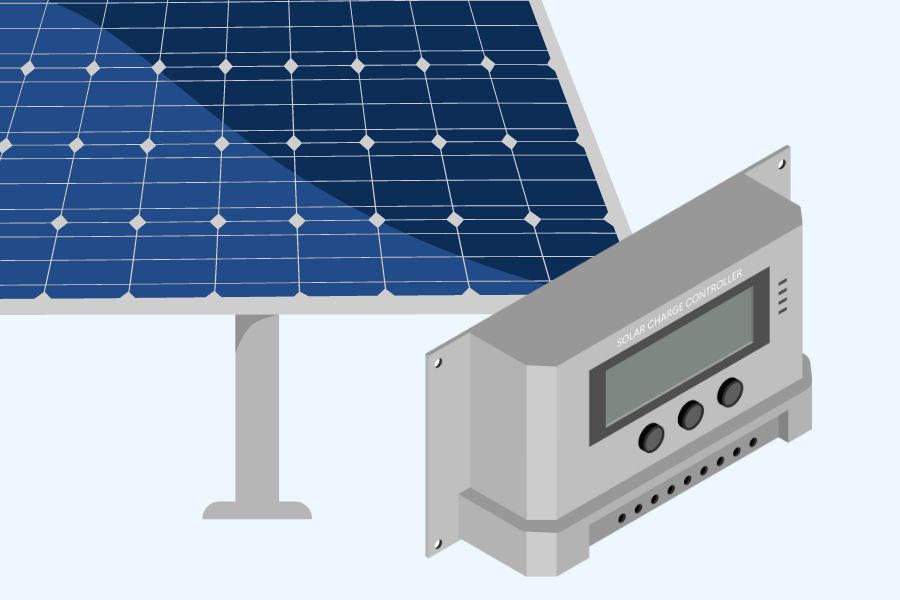
Though you aren’t using a battery system, integrating a charge controller is still beneficial. This device can prevent potential over-voltage situations that could damage your appliances. Connect the solar panel’s positive (+) terminal to the charge controller’s positive input and do the same for the negative (-) terminals.
5. Powering DC Appliances
If you’re operating a DC device, you can connect it directly to the charge controller. Ensure the device’s voltage matches the solar panel’s to prevent potential damage.
6. Powering AC Appliances
For AC devices, the system needs an inverter. Connect the charge controller’s DC output to the inverter’s DC input.
The solar inverter will convert the DC power from the solar panel into AC power suitable for your appliances. After setting up the inverter, you can plug your AC devices into it.
7. Prioritize Safety
It’s crucial to ensure all connections are tight and secure. Consider using fuses or circuit breakers to protect your equipment.
If you’ve set up outdoors, ensure your devices are rated for outdoor use or adequately sheltered from weather elements.
In adverse weather conditions like heavy rain or snow, it’s wise to disconnect and protect the entire setup.
8. Regular Maintenance
To maintain efficiency, clean the solar panels from time to time. Dust, dirt, or bird droppings can reduce the panel’s effectiveness. Additionally, periodically inspect all connections to ensure they remain secure and functional.
Can You Use a Grid-Tied or Hybrid Inverter Without a DC to DC Converter?
Grid-tied and hybrid inverters primarily convert the DC power generated by solar panels into AC power suitable for home use or to feed back into the grid. Traditionally, these inverters connect directly to solar panels without needing a DC-to-DC converter.
However, with the advent of solar panel optimization technologies, DC-to-DC converters, often referred to as “optimizers,” have become popular.
They’re placed at each solar panel, ensuring it operates at its maximum power point, thus optimizing the energy harvest.
This becomes especially useful in scenarios where partial shading or different panel orientations might affect some panels but not others.
In systems using microinverters, which convert DC to AC right at the panel, a DC-to-DC converter is unnecessary
Can I Use Solar Panels and Inverter Without Battery Storage?
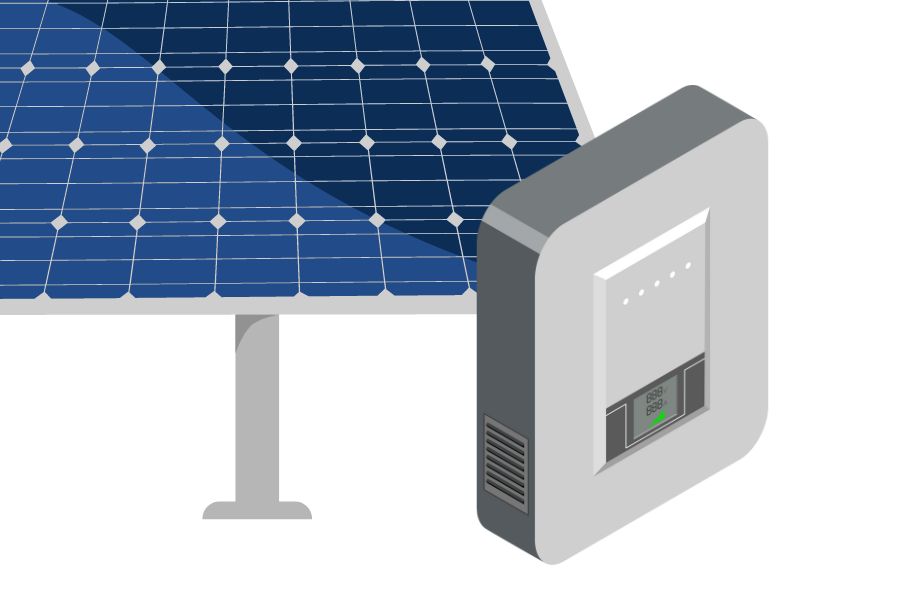
Using a solar panel and an inverter is possible without incorporating battery storage. This type of setup is commonly called a grid-tied or on-grid solar system. Here’s a deeper look into it:
In a grid-tied solar system, the solar power system generates electricity during the day, which is then converted from DC to AC power by the inverter, making it suitable for household use.
Instead of storing excess power in batteries, this system sends it back to the local electric grid, essentially allowing the grid to act as a “battery.”
In many regions, utilities credit homeowners for this excess electricity through net metering. At night, or when your solar panels aren’t generating enough electricity for your needs, you draw power from the grid.
There are clear benefits to such a setup. Firstly, installation and maintenance costs are reduced by bypassing the need for batteries. Additionally, homeowners don’t have to worry about battery replacement or disposal.
However, one downside is that during power outages, a grid-tied system without batteries will typically shut down as a safety measure, leaving you without power. On the other hand, a system with battery backup can continue to provide electricity.
Where Can 5KW Solar System Without Battery Be Used?
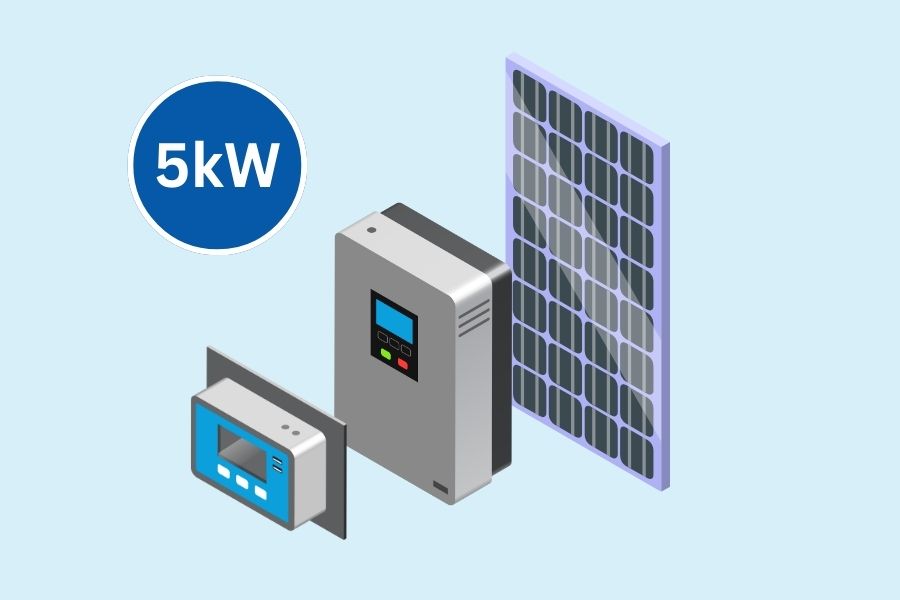
A 5kW solar system without a battery, commonly known as a grid-tied or on-grid solar system, can generate significant daily energy, depending on sunlight availability. Here are some scenarios and places where such a system can be used effectively:
- Residential Homes: The most common application for a 5kW system is in residential settings. For many households, especially in areas with decent sunlight, a 5kW system can cover a significant portion or all of their daily energy needs.
- Small Businesses: Small enterprises, like cafes, boutiques, or offices, can employ a 5kW system to offset their energy costs, thereby promoting sustainability and reducing overheads.
- Schools and Educational Institutions: While larger institutions might need a more extensive setup, smaller schools or training centers can use a 5kW system to power classrooms, offices, and other essential areas.
- Agriculture: Farms with operations requiring power during the day, such as irrigation pumps or machinery sheds, can benefit from such a system.
- Public Facilities: Places like community centers, health clinics, or libraries in small towns or rural areas can harness a 5kW solar system to reduce reliance on the grid.
- Remote Operations: Research stations, field offices, or any other facility that operates primarily during the day in remote areas can use this system, provided they have a backup or are connected to a grid for times when solar power isn’t sufficient.
- EV Charging Stations: A 5kW system can be part of a solar solution for electric vehicle charging stations, especially for smaller setups or combined with larger systems.
While a 5kW system without battery storage offers the advantage of reduced costs and more straightforward maintenance, it’s important to note its limitations.
It’s most effective when consumption aligns with production, i.e., during sunny periods. Additionally, during grid outages, a grid-tied system without a battery backup will not provide power unless equipped with specific islanding safety mechanisms.
Can the Off-Grid Solar System Work Without Batteries?
An off-grid solar system typically uses batteries to store energy when the sun isn’t shining. However, an off-grid system could technically operate without batteries if one’s energy needs are strict during sunlight hours.
For instance, certain agricultural equipment or daytime-only operations might not need storage. Yet, this approach has limitations. Without batteries, there’s no power provision for cloudy days or nighttime needs.
Batteries are essential in off-grid systems for most applications, especially residential setups, to ensure consistent power availability.
While possible in specific scenarios, off-grid solar systems without batteries are impractical for round-the-clock energy needs.
Do I Need an Inverter if I’m Not Using Batteries With My Solar System?
Yes, an inverter is still essential even if you’re not using batteries with your solar system. Solar panels generate direct current (DC) power. Most home appliances and the electrical grid operate on alternating current (AC) power.
An inverter’s primary role is to convert the DC power from solar panels into usable AC power. Whether storing energy in batteries or directly feeding it into your home or the grid, converting from DC to AC is crucial.
Without an inverter, the electricity generated by solar panels would be incompatible with most household appliances and the wider electrical grid.
What Happens With Excess Generated Energy in Solar Panel Systems Without a Battery?
Excess-generated energy typically has two options in a solar panel system without a battery.
If the system is grid-tied, the surplus energy is fed back into the electrical grid, potentially earning the owner credits through net metering or a similar arrangement with the utility company.
This process allows the grid to act as a “virtual battery,” storing excess power for later use. If the system isn’t connected to the grid, any excess energy generated is unfortunately wasted, as there are no means to store or redistribute it.
Hence, grid-tied systems are more advantageous in optimizing energy utilization and economic benefits.
What Happens When Solar Batteries Are Full?
When solar batteries reach their full capacity, they stop charging to prevent overcharging, which could damage the battery and reduce its lifespan.
Modern charge controllers or battery management systems are pivotal in this process, ensuring batteries don’t exceed their charge limit.
If the solar system is grid-tied, excess energy can be fed back into the grid once the batteries are full, possibly earning the homeowner credits through net metering.
If the system is off-grid and the batteries are full, excess energy will typically be diverted to a dump load or be wasted unless there’s immediate demand for power.
Pros and Cons of Using a Solar Panel Directly Without a Battery
Pros:
- Lower Initial Costs: Without batteries, the initial investment for a solar setup is considerably less.
- Reduced Maintenance: Batteries, especially lead-acid types, require periodic maintenance and eventual replacement. By omitting them, you reduce the time and cost associated with upkeep.
- Simpler System: Without batteries, the system is more straightforward, involving fewer components and less complexity in installation.
- No Energy Loss in Storage: Storing battery energy is not 100% efficient. By using power directly, you avoid storage losses.
- Environmental Benefits: Batteries, especially certain types, can have environmental implications regarding disposal. Direct use reduces this concern.
Cons:
- Dependency on Real-Time Generation: You can only use power when the sun is shining, making nighttime operations or cloudy days impossible without an alternate power source.
- Potential Wastage: Any excess energy generated that isn’t used immediately is wasted, leading to inefficiencies.
- No Backup during Outages: If connected to the grid and there’s an outage, a system without a battery won’t have stored energy to tap into.
- Grid-tied Limitations: If feeding excess power back to the grid, you depend on the grid’s availability and the utility’s willingness to buy or credit for the surplus.
- Limited Load Flexibility: If your energy consumption suddenly spikes beyond what the panels are generating at that moment, you’ll face challenges without stored backup power.
Conclusion
In the unique climatic backdrop of Ireland, where daylight varies dramatically between seasons, using solar panels directly without batteries offers both opportunities and challenges.
Leveraging this approach can benefit those keen on tapping into the sun’s energy during the extended daylight hours of summer without the costs and maintenance associated with battery storage.
However, the shorter winter days and often overcast conditions underscore the system’s limitations in consistent energy availability.
For those in Ireland considering a direct solar setup, a deep understanding of seasonal energy needs and the ability to adapt to the island’s dynamic weather patterns is essential.
As the green energy wave sweeps across Europe, those in Ireland can see direct solar usage as a testament to the adaptability and innovation inherent in the quest for sustainability.
